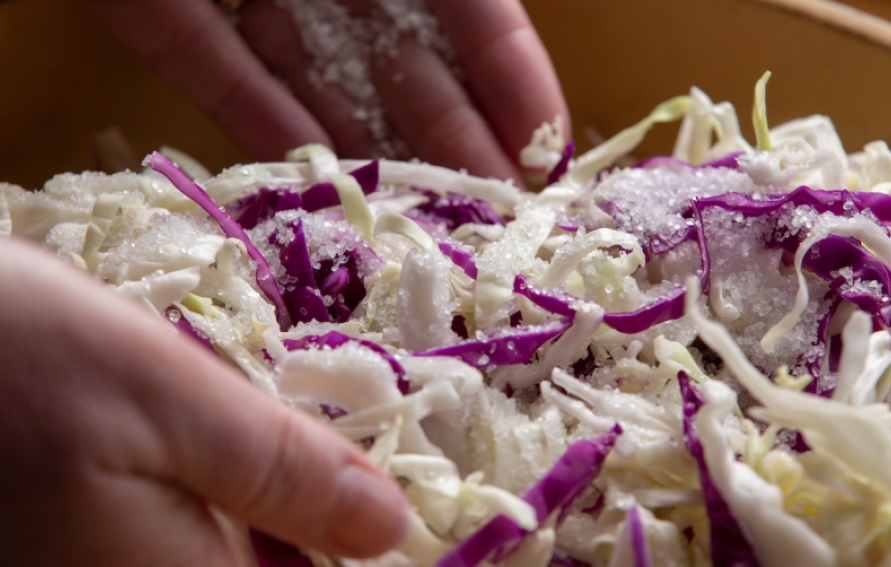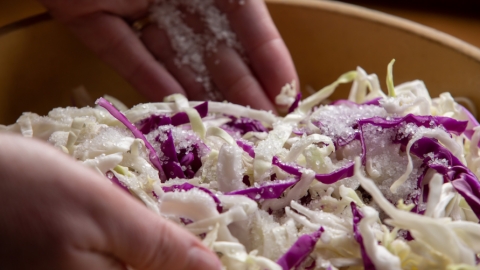Ingredients
- 25 pounds of white cabbage (about 5–6 heads of cabbage)
- 1 cup of 100% pure canning/pickling salt
- 2 cups warm, distilled water
- Additionally, for ‘Water Bag,’ 2 Tablespoons 100% pure canning/pickling salt
Instructions
For Traditional Sauerkraut
Remove the outer leaves of cabbage. Using a large sharp knife, slice cabbage into long, thin shreds. (You can use a large mandoline or ‘kraut cutter.’) Place shreds into large bowl. Sprinkle shreds with salt. Using hands, mix salt thoroughly with cabbage. Set aside for 15 minutes. Wash and sterilize fermenting vessel with hot soapy water.
Transfer cabbage shreds, including liquid, to fermenting vessel. Place container on the floor or other solid and stable surface. With sauerkraut pounder, begin pounding the cabbage. (Make an improvised sauerkraut pounder by wrapping a heavy-duty plastic freezer bag around the end of a baseball bat secured with a rubber band.) Pound cabbage until enough liquid is released to completely cover the surface by about 1 to 2 inches. (Sometimes, cabbage does not have enough moisture in it to cover, regardless of how much it’s pounded. In those cases, mix 2 cups of room-temperature distilled water with 2 Tablespoons of canning salt until salt is fully dissolved. Pour into the fermenting vessel. Pound for a few minutes to fully integrate.) Cover the fermenting vessel with a fitted wooden lid or water bag.
For Fermenting
Place fermenting vessel in a cool, dry location away from direct sunlight to ferment. (Ideal fermentation temperature is 68 to 72 degrees for the first week, then 55 to 65 degrees after that. Dry basements are ideal as they maintain a relatively consistent temperature.) Check on your fermenting vessel daily. Check for any evidence of spoilage or rot. You may notice some bubbling; this is normal and can be skimmed. Your crock should have a vinegary scent; if it smells of mold or rot and any strands of cabbage are gray, soft or otherwise discolored, your batch has been contaminated and must be discarded. Fermentation time is variable based on temperature. Taste your kraut at about 3 weeks. It can take anywhere from 3 to 6 weeks to achieve ‘peak ferment.'
Water Bag Construction
Take a 1-quart, 1-gallon, or 2-gallon heavy-duty plastic freezer bag and fill halfway with room-temperature water. Add 1 Tablespoon of canning salt. Seal. Place that bag into another bag and seal. Rinse with warm water. Lay flat on top of fermenting vessel and adjust so that it fully covers the opening.






